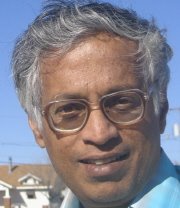Ustad Inayat Khan, the great sitar maestro
Dr. K.Rohiniprasad
While Ravi Shankar popularized the sitar all over the world, several connoisseurs consider Vilayat Khan’s artistry unparalleled as asitar player and a complete musician. Vilayat Khan belongs to an illustrious line of sitar players from
After his father's death Inayat was trained by Alladiya Khan, Allah Bande Khan and Zakiruddin Khan (Jaipur). Initially a court musician of
Inayat Khan had a great command over the ragas and the sitar, which could express any emotion. He introduced the khayal gayaki style on the sitar in what is now known as the Etawah gharana. In his 78RPM records we can glimpse his wonderful vocal-style presentation of ragas on the surbahar as well as the incredible speed and power of his sitar playing. On the surbahar he used to render alap, jod and jhala without percussion in dhrupad style, followed by the khayal type composition on the sitar with tabla accompaniment, with great improvisation in rhythm and notes with excellent layakari. His bols and right hand strokes became trend-setters for future generations. He wore his hair long and put in long hours of practice with his hair tied to a window behind him. It would jerk him awake in case he dozed off with the sitar in his hands. The rigorous training he received was handed down to his sons and thus paltas of immense speed and complexity were passed on from generation to generation. At the same time, the lyrical quality of music was preserved in the form of exquisite meends, murkis and gamaks.
Inayat Khan became a regular performer and leading sitar player at music festivals, receiving accolades from his peers as well as senior musicians. In his youth Ravi Shankar was planning to learn from Inayat Khan when the Ustad suddenly passed away. Inayat Khan’s wife Basheeran Begum belonged to a family of great vocalists and helped train her young sons after her husband’s untimely death.
Inayat Khan’s style and artistry is preserved in the music of his sons, grandsons and followers. His compositions, his jhala patterns and his right hand technique are often reproduced by his illustrious son Vilayat Khan. In his concerts, Vilayat Khan sometimes demonstrates several gats in the raga Piloo that were composed by his father and fore-fathers. This illustrates the glorious tradition as well as the evolution in sitar playing techniques and innovation.





0 Comments:
Post a Comment
<< Home